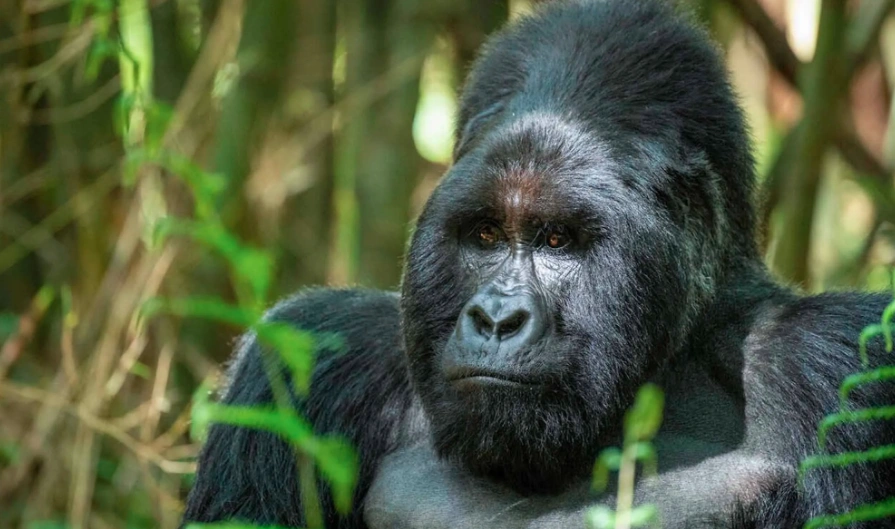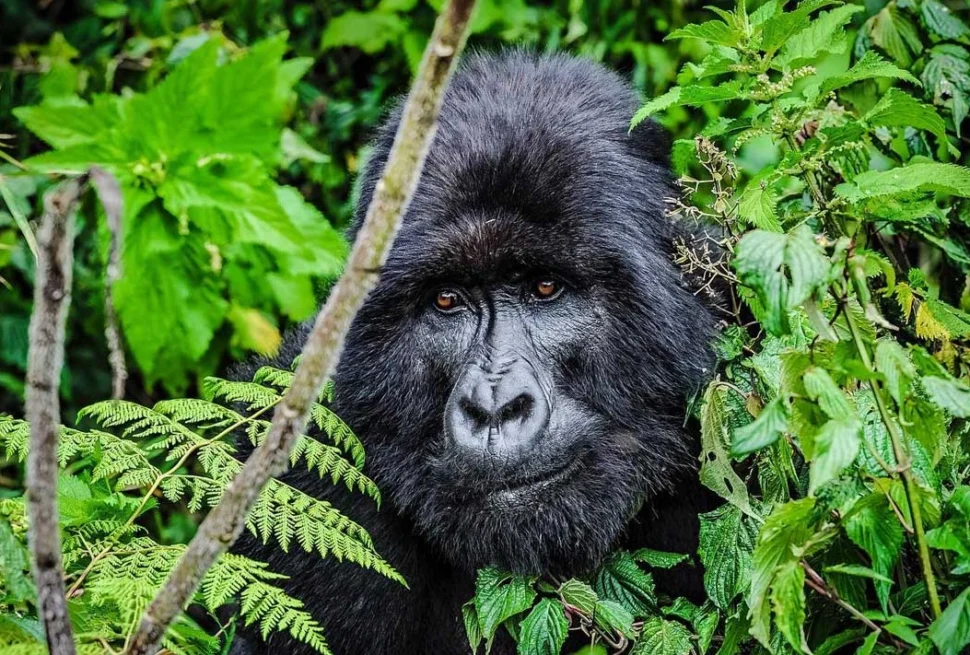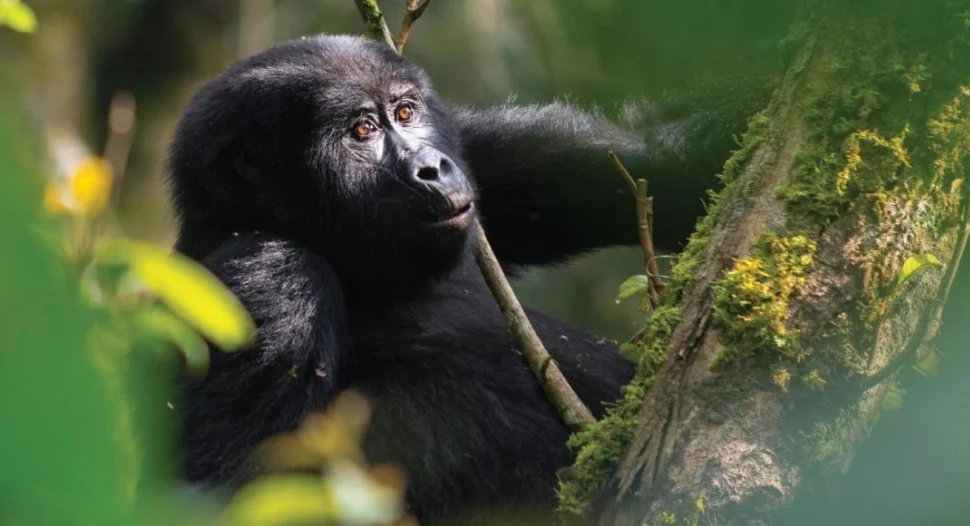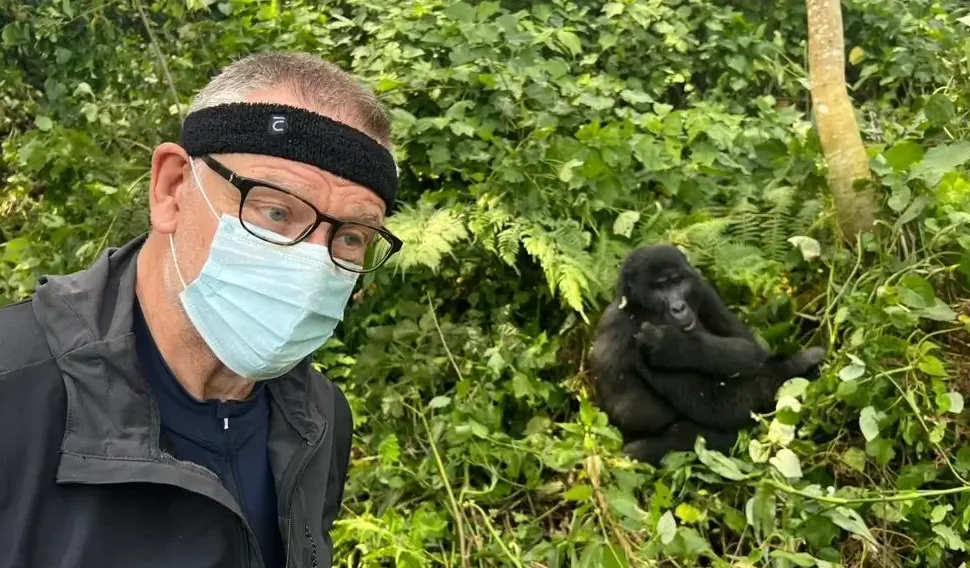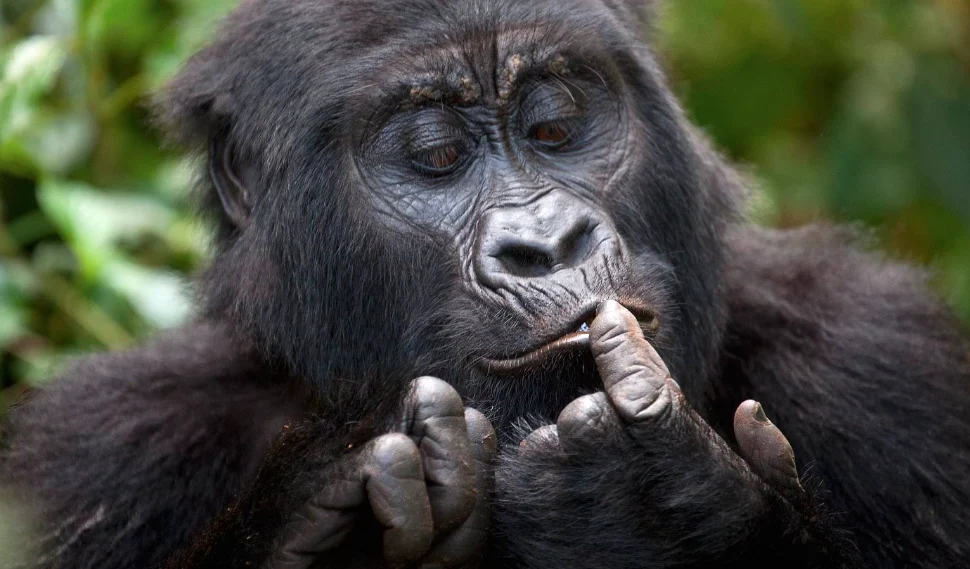“In the presence of a gorilla, you realize how much you’ve forgotten about being human.”
— Diane Fossey
Uganda is one of only three countries on Earth where you can see mountain gorillas in the wild. It’s not just an activity—it’s a pilgrimage. But if you’re planning your trek, there’s a question that matters more than most: Where in Uganda can you actually see gorillas?
Let’s unpack the two parks where this experience unfolds, explore the sectors, and compare the different vibes and terrains. Because choosing the right location could make or break your once-in-a-lifetime journey.
Gorilla Trekking Locations in Uganda
Uganda offers two official national parks for gorilla trekking: Bwindi Impenetrable National Park and Mgahinga Gorilla National Park. Both are tucked away in the southwestern part of the country, close to the borders of Rwanda and the Democratic Republic of Congo.
Each park offers its own kind of magic—Bwindi is vast and varied, while Mgahinga is intimate and scenic. But before we compare, let’s break down each location.
Bwindi Impenetrable National Park
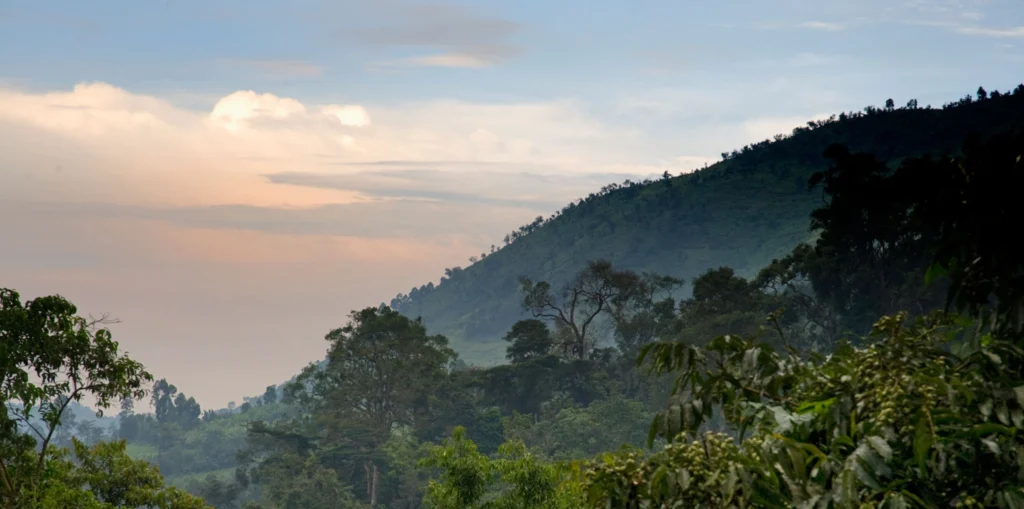
Bwindi Impenetrable Forest is where the bulk of Uganda’s gorilla trekking happens. It’s massive—over 320 square kilometers of tangled jungle—and home to more than 20 habituated gorilla families.
To manage foot traffic and conservation, Bwindi is divided into four main trekking sectors:
1. Buhoma Sector (North)
- Overview: The original gorilla trekking hub in Uganda. Buhoma was the first sector to open to tourism in 1993.
- Gorilla Families: Mubare, Habinyanja, Rushegura.
- Why Go: It’s relatively easy to reach, has a wide range of lodges, and offers more gentle terrain for trekkers.
- Vibe: Comfortable, developed, and ideal for first-time trekkers.
2. Ruhija Sector (East)
- Overview: High altitude and misty mornings define Ruhija. It’s the least visited sector—but that’s not a bad thing.
- Gorilla Families: Bitukura, Oruzogo, Kyaguliro.
- Why Go: Peaceful, less crowded, and great birding too.
- Vibe: Remote and raw, for nature lovers who enjoy the path less traveled.
3. Nkuringo Sector (Southwest)
- Overview: Beautiful but physically demanding. Trekking here is not for the faint-hearted.
- Gorilla Families: Nkuringo, Bushaho, Christmas.
- Why Go: Incredible views over the Virunga Volcanoes and a sense of real wilderness.
- Vibe: Wild, scenic, and rewarding. Ideal for seasoned hikers.
4. Rushaga Sector (South)
- Overview: The busiest sector, but also the one with the most gorilla families and flexible trekking options.
- Gorilla Families: Nshongi, Mishaya, Busingye, Bweza, Kahungye, Mucunguzi, Rwigi, Kutu, Bikingi, and more.
- Why Go: Great for last-minute permit availability, plus it’s the only sector offering the Gorilla Habituation Experience.
- Vibe: Popular and practical. A good option if you want more flexibility or if other sectors are fully booked.
Mgahinga Gorilla National Park
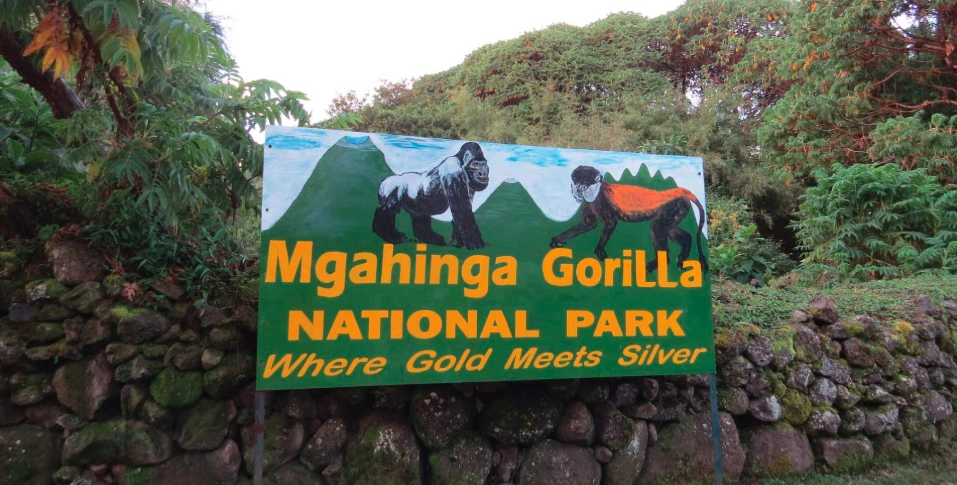
Tucked against the Rwandan and Congolese borders, Mgahinga Gorilla National Park is part of the larger Virunga Massif that spans three countries. It’s Uganda’s only park where you can trek across volcanic terrain and see golden monkeys too.
- Gorilla Family: Nyakagezi (the only habituated family here).
- Why Go: Stunning scenery, fewer tourists, and a more intimate trekking experience.
- Vibe: Quiet, cinematic, and culturally rich—especially with Batwa heritage trails available.
Bonus: If you want the path very less traveled, this is it. Nyakagezi gorillas used to roam across borders, but they’ve been reliably settled in Mgahinga for several years now, making the experience more predictable.
Bwindi vs Mgahinga: Key Differences
| Feature | Bwindi Impenetrable NP | Mgahinga Gorilla NP |
|---|---|---|
| Size | Large, dense, 320 km² | Small, compact, 34 km² |
| Number of Families | 20+ habituated families | 1 habituated family |
| Trekking Terrain | Forested, varied elevation | Volcanic slopes, bamboo forests |
| Scenery | Thick jungle, dramatic ridges | Open views, Virunga volcano backdrops |
| Permit Availability | Easier to find slots (more families) | Limited due to only one family |
| Extras | Gorilla habituation, community walks | Golden monkeys, Batwa cultural experiences |
| Crowds | More tourists overall | Fewer visitors, more solitude |
Map & Geography
Both Bwindi and Mgahinga lie in Uganda’s southwestern corner, near the borders of Rwanda and the Democratic Republic of Congo.
While close on a map, the journey between them is not as quick as it looks—especially with winding mountain roads and occasional rain-related delays.
Bwindi’s Layout: Four Sectors, Four Trailheads
Because of its size and rugged terrain, you can’t just drive across Bwindi in a day. Each of its four sectors—Buhoma, Ruhija, Rushaga, and Nkuringo—has its own entry gate and trail system.
If you’re planning your trip, consider flying into Kihihi or Kisoro Airstrips, depending on your sector, or driving 8–10 hours from Kampala or Entebbe.
Mgahinga’s Simplicity
Mgahinga is more straightforward. There’s one entrance gate and one gorilla family. Most visitors fly into Kisoro or drive from Kigali, Rwanda—just 4 hours away.
Yes, flying into Rwanda and crossing the land border is totally legal and often more time-efficient than traveling from Uganda’s capital.
Gorilla Families by Region
Knowing which gorilla families live where can help you make an informed choice—especially if you’re curious about group size, personality, or trekking difficulty. Here’s a simplified overview of where to see which families:
1. Buhoma Sector (Bwindi – North)
- Mubare: Oldest habituated group in Uganda; relatively small and easy to trek.
- Rushegura: Calm, often near the lodges.
- Habinyanja: Known for being lively and mobile.
2. Ruhija Sector (Bwindi – East)
- Bitukura: Friendly and often curious.
- Oruzogo: Large group; often in scenic forest areas.
- Kyaguliro: Mostly reserved for research, rarely trekked.
3. Nkuringo Sector (Bwindi – Southwest)
- Nkuringo: Demanding hike, but stunning scenery.
- Bushaho & Christmas: More elusive and require longer treks.
4. Rushaga Sector (Bwindi – South)
- Nshongi, Kahungye, Bweza, Mishaya: All accessible with permits year-round.
- Rwigi, Mucunguzi, Bikingi, Kutu: Recently habituated; good choices for Gorilla Habituation Experiences (up to 4 hours with gorillas instead of the usual 1).
5. Mgahinga Gorilla National Park
- Nyakagezi Family: Stable, charismatic group. Known for large silverbacks and photogenic open terrain.
So… Where Should You Go?
Here’s a breakdown to help guide your decision:
- You want lots of options & permit availability? → Rushaga or Buhoma (Bwindi)
- You want the easiest trek? → Buhoma
- You want something offbeat and scenic? → Nkuringo or Ruhija
- You’re flying in from Rwanda or want fewer crowds? → Mgahinga
- You want the ultimate experience? → Try the Gorilla Habituation in Rushaga (only available in Uganda!)
One Country, Two Incredible Worlds
Uganda offers two very different but equally powerful ways to connect with the last remaining mountain gorillas.
Whether you go with the expansive mystery of Bwindi or the cinematic stillness of Mgahinga, one thing’s guaranteed: your life will never be the same after looking into a gorilla’s eyes.
So now you know where to see gorillas in Uganda. The next step? Get that permit, book your flight, and start planning your trek.
This is more than tourism—it’s transformation.

